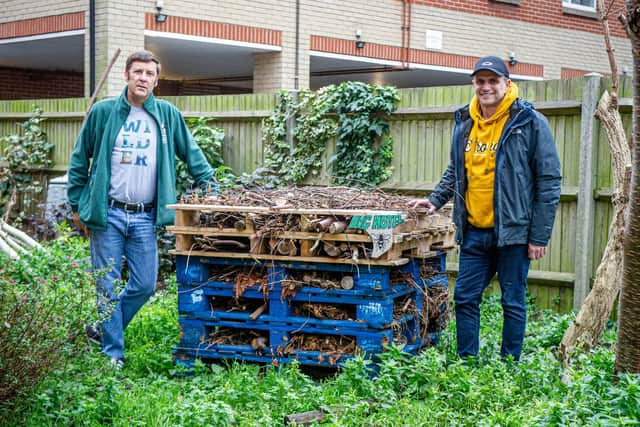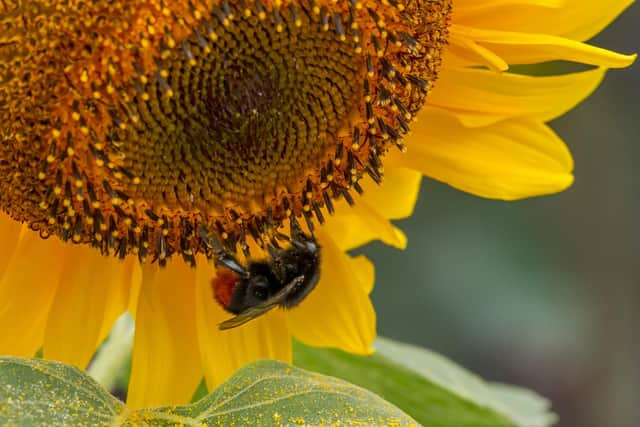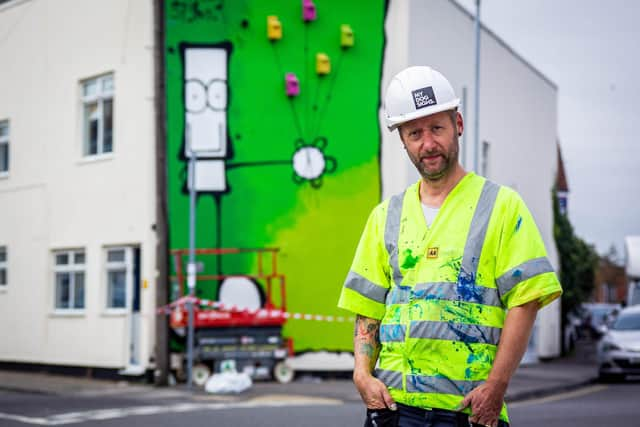Portsmouth hailed as a rewilding role model as projects 'surge' across the city
and live on Freeview channel 276
A year ago, the Hampshire and Isle of Wight Wildlife Trust launched a bold new strategy with an ambitious target – to see one in four people across the county take action to support wildlife by ‘rewilding’ their area.
Rewilding, says Hannah Terrey, director of advocacy and engagement at the trust, is a ‘wholesale change’ in an an area – encouraging nature to grow back and reclaim the land.
Advertisement
Hide AdAdvertisement
Hide AdDespite a year thrown into disarray by the Covid-19 pandemic, hundreds of people have answered the call of the wild and helped turn the city into a ‘flagship’ for the movement.


Hannah said: ‘When we looked to the next 10 years, we came to the conclusion that it’s not enough to be protecting nature in our remaining nature reserves.
‘It’s got to be a wholesale change. That’s why the ambition is high.
‘Considering it’s not the first year that we anticipated with Covid-19, it has been a fantastic year in a lot of ways.
Advertisement
Hide AdAdvertisement
Hide Ad‘We have had an overwhelming response to Team Wilder – hundreds of people have signed up to take part in the project.


‘I think people have become a lot more connected to nature in their backyards this year.
‘We have seen a real surge of interest.’
This surge of interest has seen tool and seed sharing tables pop-up across the city.


There has been the creation of three ‘wilder streets’ with residents of Francis Avenue and Whitwell Road, in Southsea, and Tamworth Road in Copnor, coming together to clear refuse and install bug hotels, bird boxes and pollinator plants.
Advertisement
Hide AdAdvertisement
Hide AdIn Francis Avenue, Portsmouth-based artist My Dog Sighs has inspired residents by incorporating bird boxes into a new mural.
Now the trust is working with Friends of the Earth to rewild a refuse-strewn area behind Derby Road, in North End, as well as undertaking similar work with the Make Centre in Fratton.
Fran Carabott, pioneer minister and trainee vicar at St Margaret's Church, in Highland Road, Southsea, has joined the movement with the creation of a community garden.
Fran said: ‘It’s been really, really positive.
‘We had a wasteland on the side of the church and in the summer of this year we cut it all back and created a community garden.
Advertisement
Hide AdAdvertisement
Hide Ad‘We’ve seen lots of bees and birds return to the area – it’s been really encouraging.’
The hard work across the city has begun to pay off, with people spotting more and more wildlife – ranging from foxes to woodpeckers – across the city, according to Andy Ames, the Wilder Communities project officer at the trust.
Andy said: ‘Considering the Covid situation, people in Portsmouth have been brilliant.
‘We have had hundreds of people across the city get involved.
Advertisement
Hide AdAdvertisement
Hide Ad‘People don’t have to do much – you could build a bug hotel or a bird box. We’ve had people just plant a few lavender plants and they’ve seen butterflies return to their garden.
‘We know the animal people in Portsmouth rave about is the hedgehog – six or seven homes in a row creating a series of holes in fences could create a highway for them.’
Since Portsmouth’s success, the trust is looking to work with other larger cities and towns, using Wilder Portsmouth’s success as a flagship and hoping to replicate the success elsewhere.
And the rewilding ethos is being applied not just to backyards and bird boxes – but acres of land that could be completely transformed.
Advertisement
Hide AdAdvertisement
Hide AdHannah said: ‘We are pushing for a new designation within the government’s planning reforms, which would create wild belts.
‘It’s about not just protecting what’s existing, but identifying new areas – like the land between Fareham and Gosport that could be a wild belt and secured for nature’s recovery.’
The trust is still considering a proposal put forward last month by Fareham and Gosport councillors, which would see the gap between the two towns rewilded.
The proposal follows Havant Borough Council’s efforts to rewild Warblington Farm, on the edge of Emsworth Harbour, with the space turned over to hay crops, new hedgerows, wildflowers and bird habitats.
Advertisement
Hide AdAdvertisement
Hide AdBut the scheme is not just about creating a reserve teeming with wildlife, but also cutting the area’s nitrate pollution by taking out of use nitrate-producing farmland.
This reduction of nitrate pollution creates credits which the council can sell to developers, with Persimmon Homes being one of the first to buy in bulk for a development east of Castle Avenue in Warblington.
Gill Glover, a policy and planning officer at Havant council, said: ‘For the first phase of Warblington Farm, we have around 524kg of nutrients available for developers to use as migration for their schemes.
‘We've got £772,640 worth of mitigation credits (for sale) from the first phase of scheme.’
Advertisement
Hide AdAdvertisement
Hide AdBut embracing nature doesn’t mean completely relegating the human touch – with Warblington Farm retaining its tenant farmer to oversee the transition.
David Hayward, planning and policy manager at the council, said: ‘That was really important to us – to make sure that essentially the sort of custody of the land is still there.
‘You know this is somebody who has managed that land for decades.
‘He knows it better than we do – better than anyone.
‘He will still be managing it for quite from years to come.’
Advertisement
Hide AdAdvertisement
Hide AdNow the future is looking brighter – and greener – for wildlife previously pushed to margins by development across Portsmouth and Hampshire.
Andy added: ‘The fact we’ve seen seals on the beach and dolphins in the Solent this year – I don’t recall that happening before.
‘And we’re looking at reintroducing beavers on the Isle of Wight, but that might be a stretch in Portsmouth.’